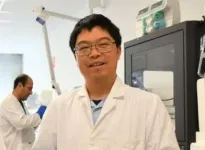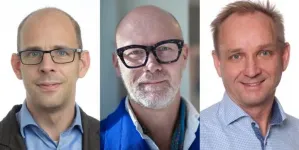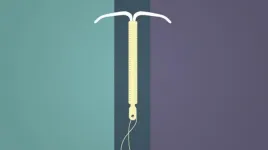(Press-News.org) Researchers at the Francis Crick Institute, as part of an international collaboration of scientists through the Pan-Cancer Analysis of Whole Genomes Consortium, have analysed the whole genomes of tumour samples from over 2,600 patients with different types of cancer. They identified a high prevalence of genetic diversity within individual tumours, which they further characterised. Their findings confirm that, even at late stages of development, tumour evolution is driven by changes that benefit the cancer.
When cancer cells divide, errors occur in the process of copying their DNA. These copying errors mean that different tumours can be made up of cells presenting a wide range of genetic diversity. This variation is a challenge for doctors as a treatment that works for one group of genetically related tumour cells, called a subclone, may not be effective against another. And certain subclones can initiate tumour spread or drug resistance.
Cancer researchers are working to understand what drives the evolution of these subclones, which arise at different points during the course of disease.
In their study, published in Cell today (7 April), researchers analysed the whole-genomes of 2,658 cancer samples, spanning 38 types of cancer. They found that 95% of samples contain at least one identifiable subclone.
They also showed that the levels of and types of genetic changes varied between cancer types. And even in the same tumour, the genetic makeup of different subclones varied widely.
Researchers think that these subclones arise due to particular evolutionary pressures present at different times during tumour development or affecting different areas of the tumour. For example, to resist a particular microenvironmental condition such as to evade the immune system.
In support of this theory, they found evidence that the evolution of subclones is affected by whether the genetic changes are helpful to the cancer subclones or not. Subclones with advantages are more likely to develop.
Peter Van Loo, author and group leader of the Cancer Genomics Laboratory at the Crick says: "Cancers are constantly changing over time, so it's important to recognise that a sample taken from a tumour reflects a single point in time and the cancer will continue to evolve after this. They can grow into a patchwork with sections driven by different mutations and evolutionary pressures.
"Understanding more about the evolution of subclones, why they develop in one direction over another, as well as how common they are, could help doctors better predict the levels of and types of variation likely to be present in a specific cancer type."
Research in this area has already shown that understanding this genetic diversity can be harnessed to predict survival or relapse, which could help doctors and patients make important treatment decisions.*
The researchers have created an open-access resource that documents the genetic variation they found in the subclones. Their computational methods are also available for others to analyse cancer genomes.
Maxime Tarabichi, author and postdoc in the Cancer Genomics Laboratory at the Crick says: "We combined a number of high-quality computational methods to analyse these complex genetic data. Reassuringly, when we put the methods together in different ways and put them through independent simulations, the results always gave findings that fit the same story."
INFORMATION:
This work was carried by the Pan-Cancer Analysis of Whole Genomes consortium, including the Francis Crick Institute, Wellcome Sanger Institute, Big Data Institute at University of Oxford, Broad Institute of MIT and Harvard, University of Toronto, Vector Institute, The University of Texas MD Anderson Cancer Center, Cancer Research UK, University of Leuven, Ontario Institute for Cancer Research, Oxford NIHR Biomedical Research Centre and others.
Peter Van Loo is a Winton Group Leader based at the Winton Bioinformatics Suite at the Crick. The ongoing work of the Van Loo Lab is kindly supported by Felicity and Robert Waley-Cohen.
For further information, contact: press@crick.ac.uk or +44 (0)20 3796 5252
Notes to Editors
Reference: Dentro, S. et al . (2021). Characterizing genetic intra-tumor heterogeneity across 2,658 human cancer genomes. Cell . 10.1016/j.cell.2021.03.009.
* For example:
https://www.crick.ac.uk/news/2019-10-07_new-genetic-test-could-predict-cancer-survival
https://www.crick.ac.uk/news/2017-04-26-tracking-unstable-chromosomes-helps-predict-lung-cancers-return
The Francis Crick Institute is a biomedical discovery institute dedicated to understanding the fundamental biology underlying health and disease. Its work is helping to understand why disease develops and to translate discoveries into new ways to prevent, diagnose and treat illnesses such as cancer, heart disease, stroke, infections, and neurodegenerative diseases.
An independent organisation, its founding partners are the Medical Research Council (MRC), Cancer Research UK, Wellcome, UCL (University College London), Imperial College London and King's College London.
The Crick was formed in 2015, and in 2016 it moved into a brand new state-of-the-art building in central London which brings together 1500 scientists and support staff working collaboratively across disciplines, making it the biggest biomedical research facility under a single roof in Europe.
http://crick.ac.uk/
Digitalisation can support transitions towards a more sustainable society if technologies and processes are designed in line with suitable criteria. This requires a systemic focus on the risks and benefits of digital technologies across the three dimensions of sustainable development: the environment, society, and the economy. This is the conclusion of a study prepared by a team of researchers at the Institute for Advanced Sustainability Studies (IASS) in Potsdam. Applying this precautionary approach to digitalisation requires the active involvement of developers, users, and regulators.
Digitalisation ...
ALS is a progressive neurological disease that attacks the nerves that interact with the body's muscles. The disease typically leads to complete paralysis of the body, robbing patients of their ability to walk, speak, eat and breathe.
Researchers studied ALS patients and healthy elderly volunteers living in Malta who took part in an ongoing study aiming at identifying genetic and environmental risk factors. Malta is a sovereign microstate in the middle of the Mediterranean Sea, and is home to a geographically and culturally isolated population. Recently, Maltese ALS patients were found to have a unique genetic makeup compared to ...
Bishop Peder Winstrup died in 1679, and is one of the most well-preserved human bodies from the 1600s. Researchers at Lund University in Sweden may now have solved the mystery of why a foetus was hidden in his coffin in Lund Cathedral. DNA from the bishop and the foetus, along with kinship analyses, has shown that the child was probably the bishop's own grandson.
Something is protruding between Bishop Peder Winstrup's two calves. The X-ray reveals small bones. Could it be an animal? When the image is studied more closely, the osteologists from Lund University can see faint signs of what is to become ...
A novel way to pinpoint and illuminate bone damage promises to make X-rays more efficient at diagnosing bone and other injuries, Flinders University researchers say.
The new technique, looking at potential biomedical applications of an ancient inorganic salt-based aggregation induced emission (AIE) radio-luminescence material, could open new frontiers in medicine including X-ray dosimetry, bioimaging and advanced applications such as optogenetics, says Professor Youhong Tang, from Flinders University's College of Science and Engineering.
The review article, published by Professor Tang, postdoctoral student Dr Javad Tavokoli, colleagues in Hong Kong and Australian technology company Micro-X and, examined the potential of the AIEgen luminogens ...
Sweden's acclaimed research on uterine transplants has taken a new step forward: into the field of health economics. Now, for the first time, there is a scientifically based estimate of how much implementing the treatment costs.
The current research is based on the nine uterine transplants from living donors carried out in 2013, under the leadership of Mats Brännström, Professor of Obstetrics and Gynecology at Sahlgrenska Academy, University of Gothenburg, and Chief Physician at Sahlgrenska University Hospital.
The transplants were performed within the scope of the world's first systematic, scientifically based study in the field. After ...
If relatives of people with mental illness become better at accepting the difficult emotions and life events they experience - which is what training in compassion is about - their anxiety, depression and stress is reduced. These are the results of a new study from the Danish Center for Mindfulness at Aarhus University.
Being a relative of a person with a mental illness can be very burdensome. It can feel like a great responsibility, and many people struggle with feelings of fear, guilt, shame and anger. A new study from the Danish Center for Mindfulness shows that eight weeks of training in compassion can significantly improve the well-being of relatives.
Compassion is a human quality that is anchored in the recognition of and desire to relieve ...
Tsukuba, Japan - Dermatomyositis is an idiopathic inflammatory myopathy that has been regarded as an autoimmunity-based disorder, although its pathogenesis remains unclear. In this study, researchers from the University of Tsukuba used a mouse model to identify a mechanism by which dermatomyositis may develop in humans. The animal model and findings can be used to better understand the disease and develop disease-specific treatments.
Dermatomyositis belongs to a group of idiopathic inflammatory myopathies that are associated with the presence of specific autoantibodies in patient sera. Multiple myositis-specific autoantibodies, which target proteins ubiquitously expressed in the nucleus or cytoplasm, have been described. One ...
A team of scientists led by Nanyang Technological University, Singapore (NTU Singapore) has created a reusable, biodegradable sponge that can readily soak up oil and other organic solvents from contaminated water sources, making it a promising alternative for tackling marine oil spills.
Made of sunflower pollen, the sponge is hydrophobic - it repels water - thanks to a coat of natural fatty acid on the sponge. In lab experiments, the scientists showed the sponge's ability to absorb oil contaminants of various densities, such as gasoline and motor oil, ...
Astronomers have found two close pairs of quasars in the distant Universe. Follow-up observations with Gemini North spectroscopically resolved one of the distant quasar pairs, after their discovery with the Hubble Space Telescope and Gaia spacecraft. These quasars are closer together than any pair of quasars found so far away, providing strong evidence for the existence of supermassive black hole pairs as well as crucial insight into galaxy mergers in the early Universe.
The quasars in each of the two pairs are separated by just over 10,000 light-years, suggesting ...
Getting a birth control implant used to cost some women hundreds of dollars, if they were among the nearly half of privately insured Americans covered by a health plan with a high deductible that they were responsible for paying.
But a new study in the April issue of Health Affairs shows that after the Affordable Care Act's no-cost birth control provision took effect in 2013, women in these high-deductible health plans (HDHPs) opted for long-acting contraception even more than women with other types of health plans.
The study's findings have important policy implications, because employers now have the ability to opt out of the birth control portion of the ACA, following a Supreme Court case decided in 2020. Many employers have shifted to HDHPs to hold down their overall health ...



